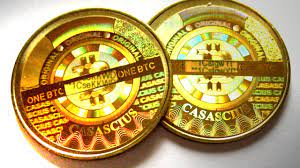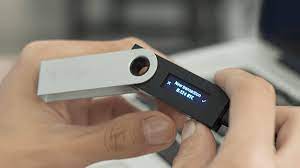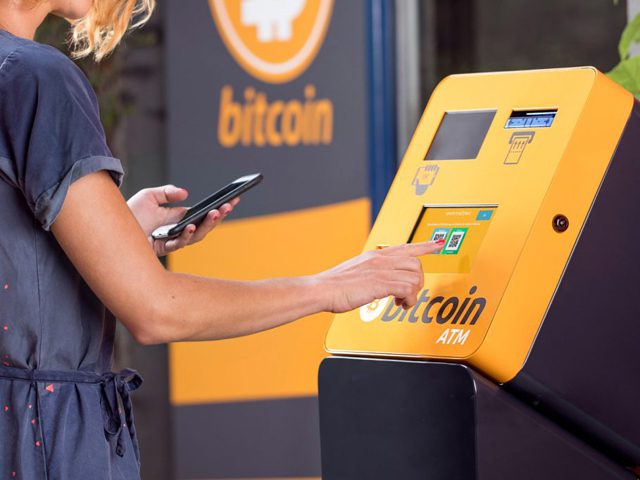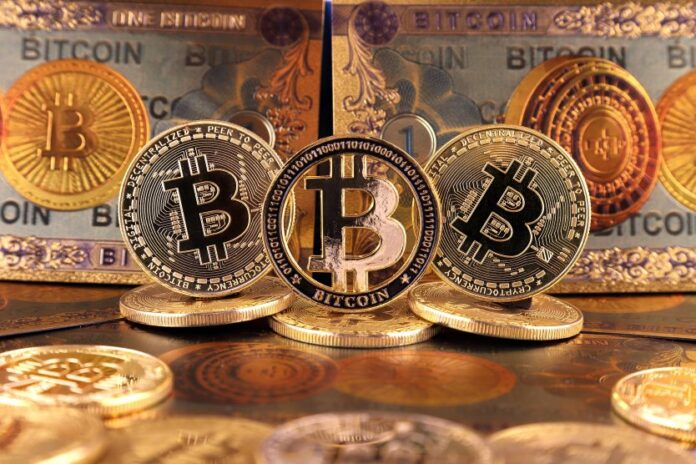What is Physical Bitcoin?
For people who have just a passing familiarity with cryptocurrency and its past, the term “Physical Bitcoin” may be deceptive.
The ability to turn digital money into a tangible object begs two critical questions: does this further the goal of cryptocurrencies generally? If Bitcoin can physically exist and be traded like nickels and dimes, what is the point?
These all valid inquiries, and each answered simply by stating that there is no intrinsic value to Bitcoins. However, they have some appeal for cryptocurrency collectors and enthusiasts and represent real Bitcoins through authentication tokens that are exclusive to each physical unit.
Example:
For example, a physical Bitcoin (usually fashioned like a round gold coin bearing the Bitcoin symbol) will contain a particular digital code on the reverse, secured by a holographic stamp, enabling the owner to access a genuine Bitcoin online vault anytime they wish.
If you are able to safeguard the funds computationally and express them in a substantial manner, you could theoretically use this format to convert any physical thing into a unit of Bitcoin.
Although the notion is less explained and elaborated than we’d like to see, physical Bitcoins do exist, and there are a number of noteworthy initiatives in the works.
Types of Physical Bitcoin
Before Bitcoin ever broke the $1000 price barrier, there was a frenzy to create and mint physical Bitcoin for both marketing and collector purposes as well as genuine BTC storage.
Casascius coin

The Casascius coin, invented by businessman Mike Caldwell in 2013, is the most notable effort at a real Bitcoin. These glitzy, eye-catching coins aroused curiosity in the cryptocurrency industry and beyond, particularly since actual Bitcoin obtained with each transaction.
Although the written holographic address on Casascius coins initially had a genuine BTC value connected to it, Caldwell and his team had to abandon this idea after the US Financial Crimes Enforcement Network (FinCEN) intervened and closed them down.
Alitin Mint
The Alitin Mint capitalized on the luxury theme by producing scarce commemorative coins that weren’t intended for use as legal tender. The coin design of Adam Smith and Joan of Arc fascinated, but it soon corrupted and rendered unusable.
Other early Bitcoin initiatives recognized for their distinctive looks and entertaining marketing strategies. While Antana produced novelty coins with clever inside jokes from the crypto community. Titan Bitcoin stood out for its unusual combination of Greek and Roman stamps.
A select few people still possess these fragments of history, which have definitely increased in value given Bitcoin’s enormous popularity. Despite the fact that the fad of physical Bitcoin burned out before cryptocurrencies become widespread in 2017.
Pros and Cons
Advantages:
Anyone who has followed bitcoin movements over the past ten years can see the appeal of physical Bitcoin. These assets primarily provide Bitcoin and other cryptocurrencies a cause to exist in the real world rather than only as digital tokens.
Decentralizing the preservation of a currency that already recognized for its decentralization is possible with physical Bitcoin as well. A more safe fortress for your money built. If you keep Bitcoin in a variety of distinct “locations,” both physical and digital.
In addition, it’s difficult to ignore how awesome physical Bitcoins appear! There have been a number of physical cryptocurrencies that have real weight, svelte profiles, and a ton of bespoke engravings, however, they range in quality and intricacy.
Disadvantages:
The core tenet of cryptocurrencies, however, is that virtual currency may replace the requirement for currency purses, wallets, and the entire process of scrabbling about for money at the clerk counter is in direct opposition with the existence of actual Bitcoins.
Others may be reluctant to incur the danger of having cryptocurrency in a physical form, despite the fact that some Bitcoin enthusiasts are ready to safeguard their holdings in various formats. As it turned out, after the credentials were released, many of the first produced physical Bitcoins were shortly hacked.
Physical Bitcoin isn’t as useful as it may seem, other than being a great collector’s item, which reasons why it didn’t take off in the beginning.
Also Read: https://5minutecoins.com/is-immediate-bitcoin-worth-your-time
Storing Physical Bitcoin
How we utilize BTC and other currencies now still largely adheres to the basics of physical Bitcoin.
Cold Storage, Hardware Wallets, and Other Things

The story of the physical Bitcoin taught us a few things. Most notably that virtual money can acquire physical shape and add another degree of protection.
This reasoning leads to the conclusion that many well-known Bitcoin investors still use this tactic. Especially to safeguard their investments in the real world. For instance, a “cold wallet” with a complicated password that is kept securely in a secure area. It isn’t linked to the internet
These seem like any other piece of hardware, such as a USB drive or an old-fashioned disc drive. But they have the capacity to store a large number of crypto assets, such as hundreds, safely.
Cards and ATMs for Bitcoin

Bitcoin ATMs, which have been mushrooming in large cities all over the world in their millions, are another way that cryptocurrencies may be seen in the real world.
Although there are costs involved upfront, using a bitcoin ATM is a quick and simple way to convert BTC into heaps of cash.
Instead, Bitcoin debit cards are gaining popularity because they let customers easily cash out their cryptocurrency at the point of sale. And accrue rewards much like a regular bank card.
Conclusion
While we are excited to see crypto become more prevalent in the real world. Let’s not lose sight of the fact that the movement’s main goal is to develop a quicker, more accessible, and more adaptable form of money that anybody can use.
As seen by mining projects, electronic wallets, ATMs, and other applications, cryptocurrencies still have close linkages to the real world. Although actual Bitcoins are no longer in existence. A universe of new opportunities is just beginning to become available to us.

